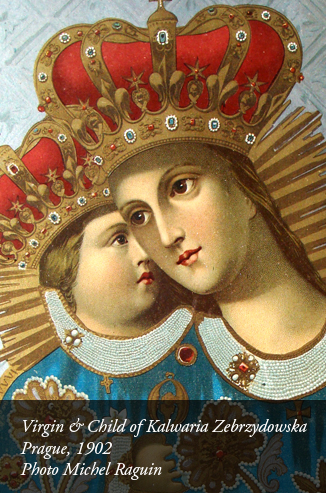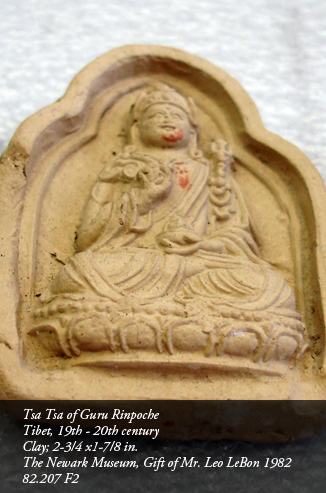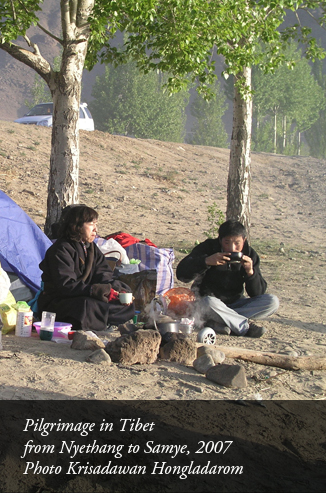




Introduction
This exhibition focuses on fundamental issues of the three religions and the many ways their practices converge in the pilgrimage experience. The pilgrim's goal is the holy site; to approach it involves both physical and temporal expense, beginning through detachment from the familiar. The hoped-for result is the acquisition of humility, acknowledging the smallness of the self and the greatness of the divine. Paramount is the injunction to exercise charity to others and also in humility to accept charity from others.
Although often rare and beautiful, art also functions as a vital part of social systems that cement the bonds of community, as well as supporting the role of religion in transcending human limitations. All three religions display a deeply felt motivation to affect the life of the believer through transformative experience, frequently involving art. All structure an intersection of the individual with both natural and built environments, ritualized behavior, and tangible objects. This tangible object may range from a bejeweled statue venerated at a national shrine to the commonly available chromolithograph. Pilgrimage ultimately creates a liminal situation within which the believer is neither in the realm of the ordinary nor yet within the sacred.
The juxtaposition of religions whose beliefs and practices are so often seen as incompatible reveals profound similarities. Participants on pilgrimages saw objects of supreme artistic skill (Islamic glazed tile, Christian enameled reliquaries, or Buddhist bronze statues) mingled with mass-produced objects (lead pilgrimage badges, terracotta souvenirs, or paper mementos) and personal acquisitions such as stones or soil from the holy place. Such objects make more tangible the ephemeral experience and thus enable the owner to intensify memories of spiritual commitment and social interaction.
(continued)
The practices of Buddhists, Christians, and Muslims testify to a desire to believe in the sacred made more accessible at a holy place. This vital sacred power or blessing is known to Tibetan Buddhists as chinlab (byin rlabs). Early Christian tombs of saints were seen as possessing praesentia, the physical presence of the holy. Charity to the pilgrim can be seen as sharing the sacred power, the holy. For Muslims, charity is one of the Five Pillars of Islam, and acts of charity are imbedded in the hajj ritual, with the slaughter of animals whose meat is then distributed to the poor. In Tibet, Buddhist pilgrims can receive well wishes and material help in the form of food and money from many people, including Han Chinese and Westerners.
A pilgrim seeks to purify, connecting the inner process with the exterior physicality, especially ascent and circumambulation. Most pilgrimages involve long days of journey across often arduous terrain. But even with the goal attained, Buddhists circumambulate many times the sacred objects such as a temple, a stupa or even an entire monastery; Christians climb the stairs to embrace the statue of St. James in Compostela; and Muslims circumambulate the Ka'ba. Pilgrims often wear special dress, such as a white coat in Japan decorated with stamps from the temples visited, or carry amulets: prayer scrolls rolled within cylinders worn in Iran, a Tibetan Gau with its small objects of blessing and memory, and Christian pilgrimage badges. These tangible manifestations of commitment are directed inward as much as outward. We are fragile beings; our attention wavers and our energy fails. Reminders are necessary, whether attention to scheduled hours of prayer, communal hearing, or recitation of holy texts, or the wearing of a particular form of dress or adornment, all serve to focus purpose.
The following supplemental material was compiled by Virginia Raguin and Dina Bangdel
with F.E. Peters.